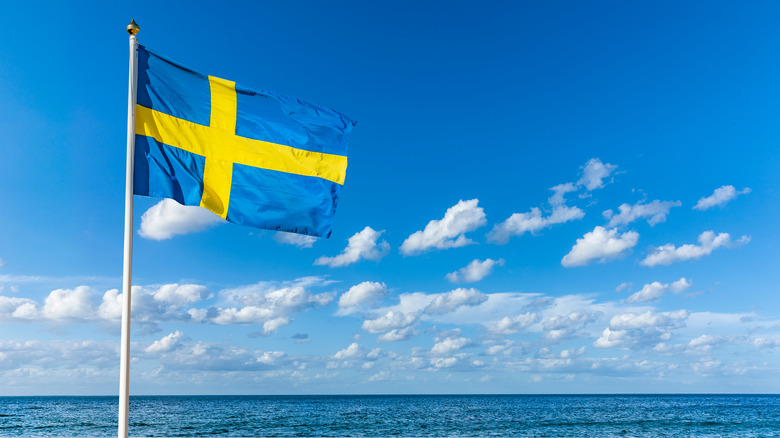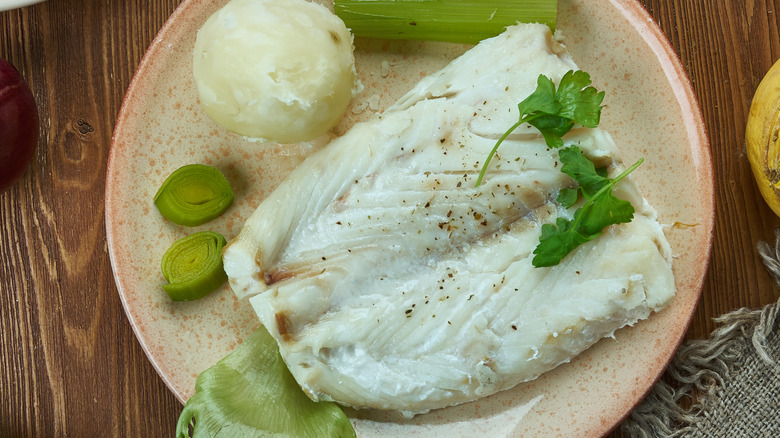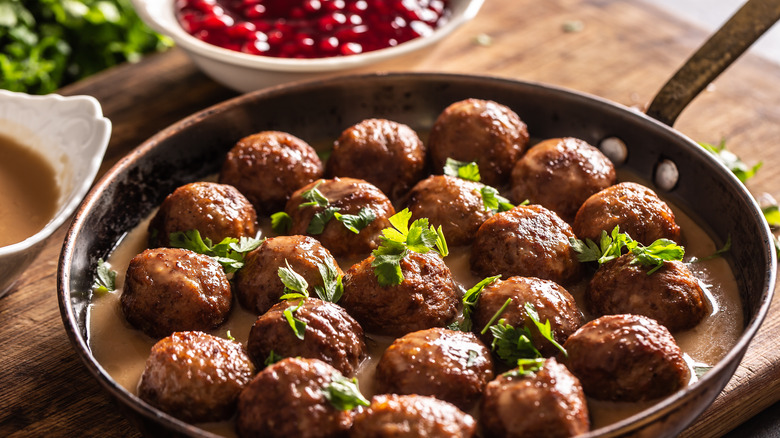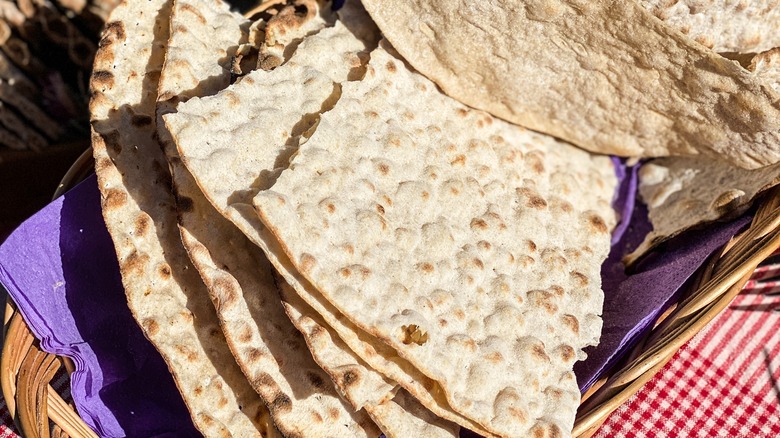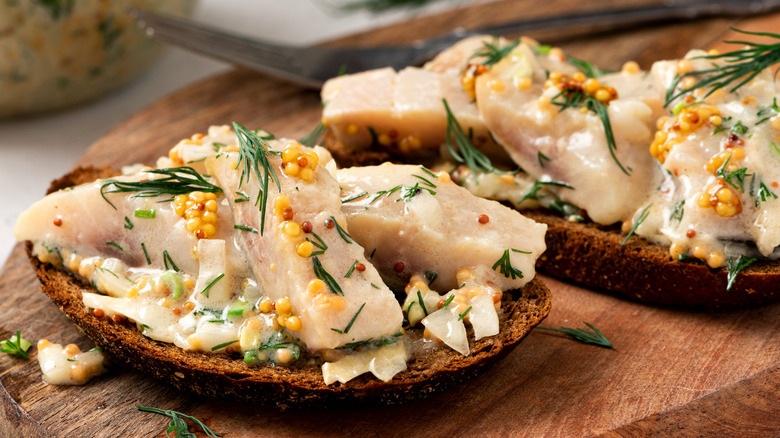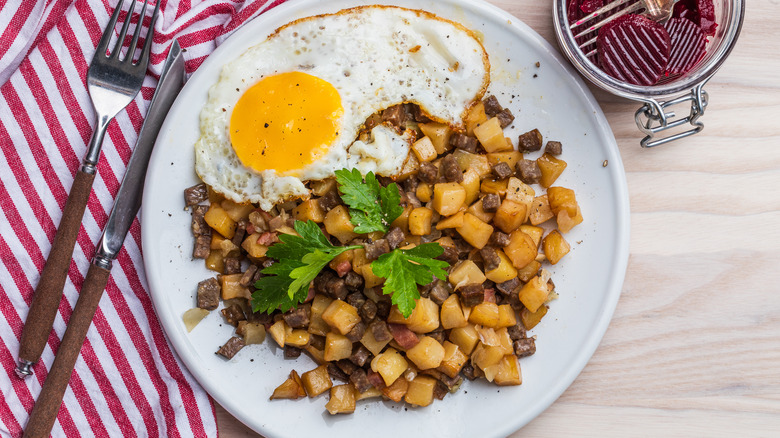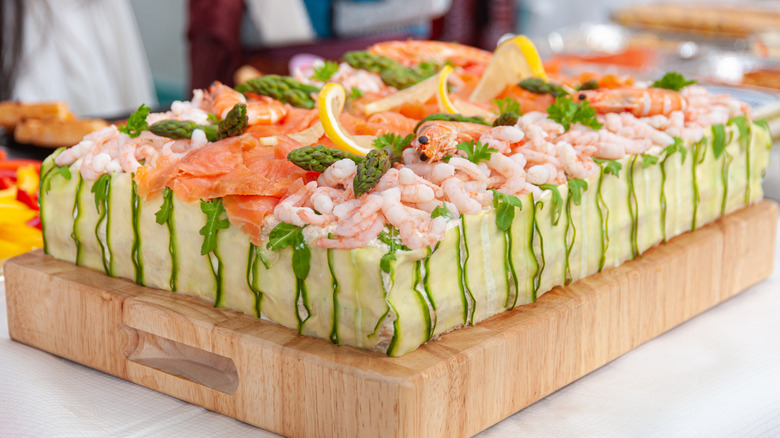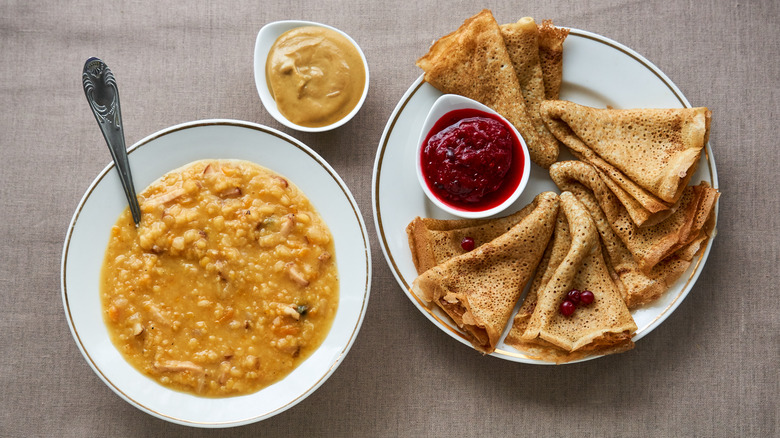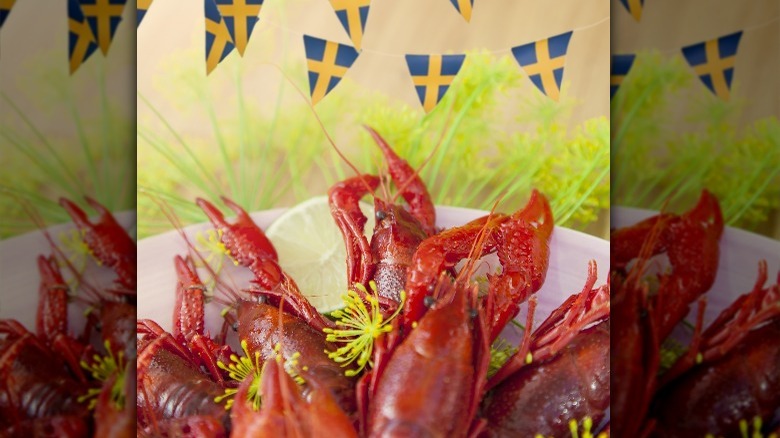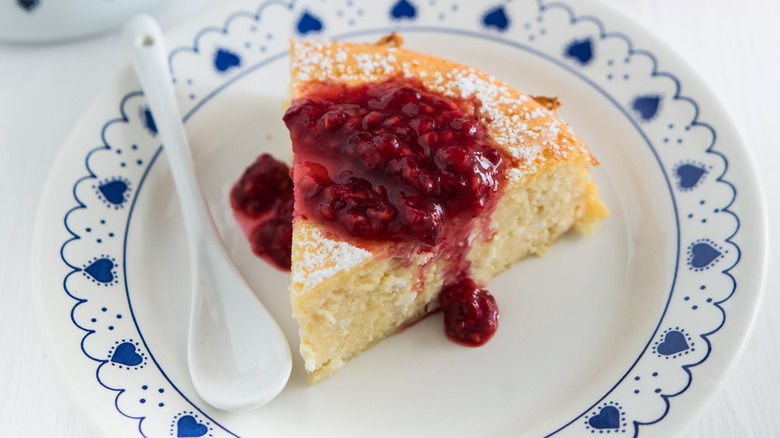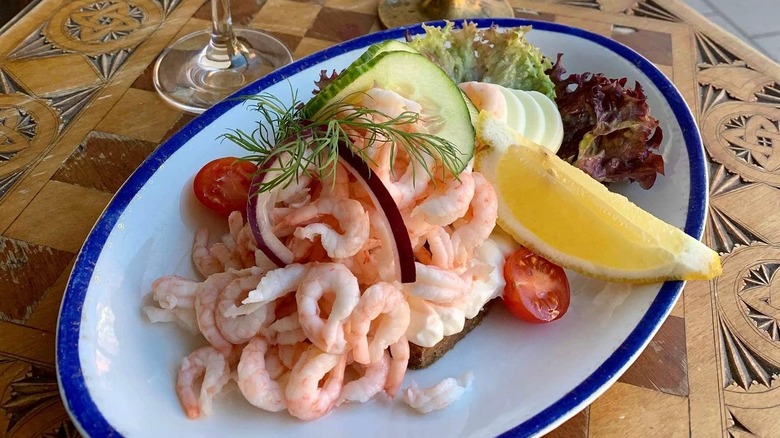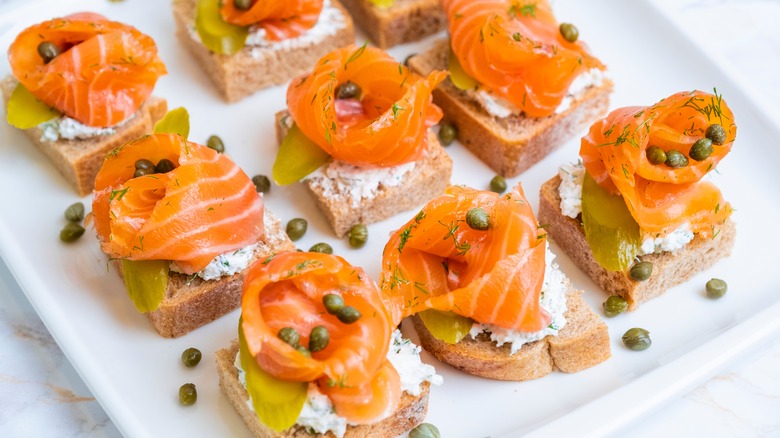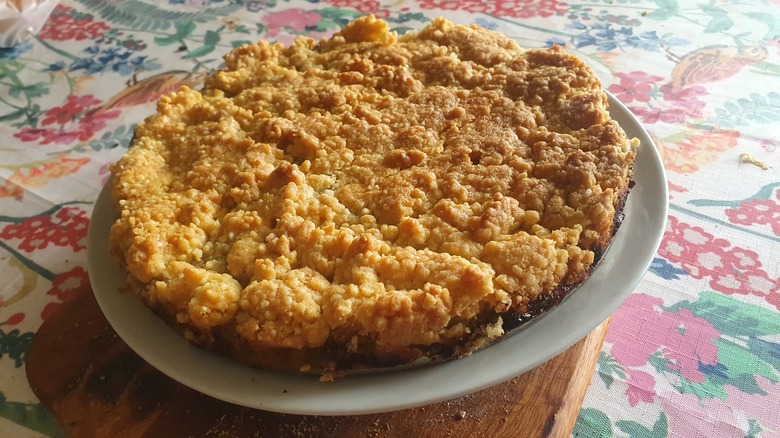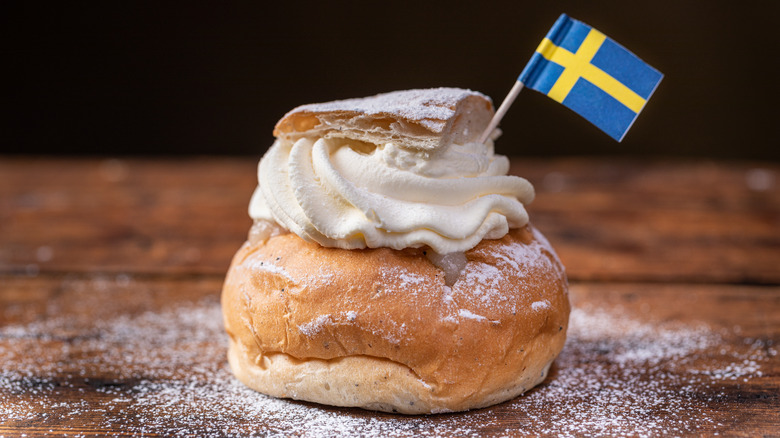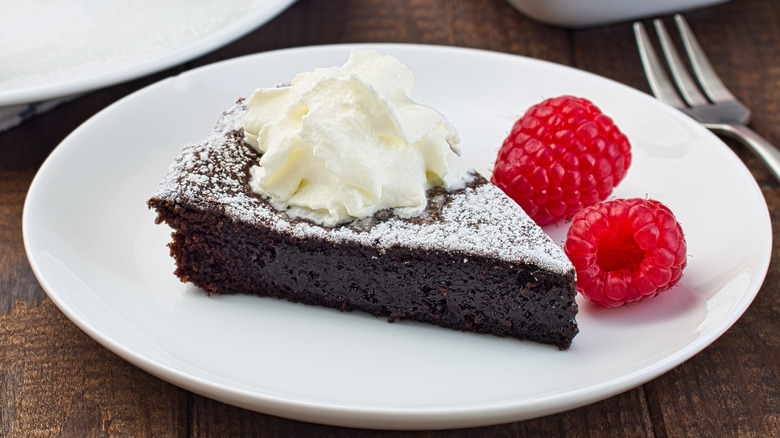Iconic Swedish Foods You Should Try Before You Die
Is your entire perception of Swedish culture derived from ABBA music and Ingmar Bergman films? You're not alone. Sure, those two exports are, in many ways, strongly indicative of their original Scandinavian home. But if the breadth of your knowledge regarding Sweden starts with an upbeat disco-pop group, and ends with a series of somber examinations of the human condition (from one of the world's greatest filmmakers), well ... you're missing out.
For instance, consider the culinary traditions and customs found in the nation that occupies the eastern half of the Scandinavian Peninsula. Maybe you can't depend on your Swedish friends to offer you any of their uniquely delightful cuisines, but that doesn't mean you can't venture out on your own to discover the nation's truly wondrous culinary creations.
Since the only guarantees in life are death and taxes, as founding father Benjamin Franklin once wrote, it's worth embracing as much of life as possible before shuffling off this mortal coil. While there's no shortage of fascinating foreign cultures to explore, you can only take things one step at a time. So with that in mind, here are the most iconic Swedish foods that you simply must try before you die.
Lutfisk
There's a case to be made that lutfisk (or lutefisk, as Norwegians spell it) is more well-known than any other entry on this list. After all, this almost-unbelievably odd dish is famous (or infamous?) as a traditional holiday meal in Nordic communities throughout the Midwest. And while lutfisk's origins clearly lie in Scandinavia, it may actually be more popular with Swedish immigrants and their descendants in the U.S. than with native Swedes, according to Smithsonian.
The borderline-poisonous preparation technique for lutfisk involves preserving cod in lye. Yes, lye — as in the corrosive chemical often used in cleaning. Use of lye in preparing lutfisk results in a gelatinous final product that emits a near-suffocating fishy stench. Preparing and eating any food product in such a way may seem crazy. But the importance of maintaining cultural traditions can't be minimized, especially those developed during difficult times. "Foods like lutfisk could have been markers of poverty in the past," Hasia Diner, a professor of immigration history at NYU, told Smithsonian in 2011, and "serve to remind ... how far they have come."
In all honesty, when compared to everything else on this list, there's a good chance lutfisk is the one you're least likely to love. But given its unique history, preparation, and taste-texture-smell combination, it's something worth trying when you have the chance — even just once.
Köttbullar (meatballs)
We're sure you're more than familiar with the concept of Swedish meatballs, whether you've had them foisted upon you by a cocktail waiter at some formal event or sampled some while browsing furniture at Ikea. After all, more than two million meatballs were eaten daily at Ikea's 340 stores as of 2021, meaning many of us have already tried the iconic köttbullar during our lives.
One of the best aspects of köttbullar, or Swedish meatballs, is the immense variety of ways in which it can be prepared. There doesn't appear to be much in the way of hard-and-fast rules required to categorize or define Swedish meatballs. Frankly, the only required ingredient for köttbullar, according to the Swedish Institute, is "love."
Actually, there is one other prerequisite to enjoying a truly authentic Swedish köttbullar: lingonberries, which are served on the side with Swedish meatballs (via SwedishFood.com).
Knäckebröd (crispbread)
Some may call the Swedish food knäckebröd a crispbread. Others, not unreasonably, may choose to classify it as a cracker (via Taste Atlas). Of course, like matzah, it's not hard to see why knäckebröd may be viewed as only tangentially related to what most of us in the U.S. consider bread.
Setting semantics aside, this relic from historically impoverished times in Sweden has remained a staple because it is easily stored, has a long shelf-life, and offers immense versatility. Knäckebröd can be enjoyed as a snack or as part of a meal. It is an oft-included addition to Swedish smorgasbords throughout the year (via Post-Gazette). When you consider it can be topped with any variety of delectable items — both sweet and savory, from pickled herring to jelly — it's obvious why this crispbread has endured for roughly 500 years.
For anyone doubting the veracity of knäckebröd's claim as an iconic Swedish food, don't just take our word. Take it from Ikea. Alongside its beloved meatballs, the company also sells knäckebröd on its website.
Pickled herring
As you'll likely notice, many of the iconic Swedish foods listed here have been around for centuries. This makes sense given that Sweden has been a sovereign nation since 1523 (via World Atlas). With such a long history, it's not surprising that many traditional foods have remained prevalent through the years — even though modern culinary capabilities have rendered moot some preserved items such as pickled herring.
Despite the seemingly unappealing appearance and the notion of pickled herring, it remains an essential component of Swedish smorgasbords. As noted in the book "Treasured Recipes of Our American and Swedish Kitchens," pickled herring ranks as "the most important of all Swedish smorgasbord dishes ... all the others can be or not be, but the herring is a must item."
It may seem odd to enjoy herring prepared through pickling. But according to Visit Sweden, this centuries-old method of extending a freshly-caught fish's shelf-life proved both cost-effective and tasty. And with such a long track record of satisfying Swedes, the continuous popularity of pickled herring proves the old notion: if it ain't broke, don't fix it.
Pyttipanna
If we're being honest, no other Swedish food may be easier for the U.S. palate to handle than pyttipanna — which is essentially just a meat and potato breakfast hash made with leftover food items (via SwedishFood.com). The simplicity of pyttipanna makes it a clear winner in homes throughout Sweden. Who can resist a simple amalgamation of eggs, potatoes, and meat?
Not only does pyttipanna contain a flavor profile suited to U.S. taste preferences, it is also fairly easy to prepare. It involves little more than sauteing everything but the eggs in a single pan before frying the eggs separately to place on top of the dish. We're drooling right now just thinking about it.
Trying pyttipanna should be on any list of iconic Swedish foods to try. As famous chef and Swedish native Marcus Samuelsson wrote, this hearty dish "defines Swedish home cooking even more than meatballs."
Smörgåstårta (sandwich cake)
It seems fair If you furrowed your brow when reading the English translation of this iconic Swedish food. Frankly, the idea of a sandwich cake can be tough to wrap your head around. So is the entire notion of a savory cake, which is what smörgåstårta is (via The Local). Of course, since a cake is nothing more than a vessel to consume a combination of flavors, it's no surprise that cakes can work with savory ingredients.
As long as you can get over any initial reservations, you'd do well to try this savory sensation from Sweden before you die. And while it may not resemble any sandwich you're used to seeing, the presence of bread in smörgåstårta means it does qualify as an open-faced sandwich (via Visit Sweden).
Part of the appeal of smörgåstårta is that it's served cold, which allows for preparation well in advance of any guests arriving to devour your beautiful concoction. It's also easier to prepare than its intimidating presentation would suggest (via The Seattle Times).
Ärtsoppa och pannkakor (pea soup and pancakes)
While the origin of some traditions may be easy to trace, the passage of time often obscures the truth about how something started. This is particularly true when talking about food duos that seem made for each other. One of those duos is Sweden's traditional Thursday lunch ärtsoppa, och pannkakor (pea soup and pancakes). That we don't know where or how this classic combo was created doesn't diminish its appeal or ability to satisfy.
Perhaps akin to grilled cheese and tomato soup in the U.S., ärtsoppa och pannkakor has been a simple and consistent staple in Sweden for ages. It is served everywhere in Sweden at lunchtime on Thursdays. How it became such a staple remains unclear.
There are a number of explanations offered for the place of ärtsoppa och pannkakor in Swedish culture, including being derived from military customs or emerging from religiously-imposed dining restrictions (via Transparent Language). But when you're dipping your pancake into that perfect pea soup and all your worries seem to melt away, does it really matter?
Kräftor (crayfish)
Depending on any number of factors, each person approaches food from their own perspective. For instance, maybe you believe food is a sort of necessary evil that does little more than fuel your body's basic requirements. But if you're the type of person who views food and eating as a communal event to experience together, you need to prioritize attending an authentic kräftskiva (or crayfish party) before you die. There, you will have a chance to try kräftor.
Given that kräftor is simply crayfish, some of you may believe you can check this one off your list already. But to truly experience this iconic Swedish seafood, you need to do so at a kräftskiva. A tradition for nearly a century, the so-called crayfish party involves plenty of kräftor. It also includes festive hats and bibs, singing, and general revelry (via Swedish Made Easy).
Additionally, there are several varieties of both salt and freshwater crayfish species in Sweden (via Visit Sweden). Even without the hullabaloo of kräftskiva, kräftor remains an iconic Swedish food worth trying.
Ostkaka (cheesecake)
Sweden ranked ninth in the world in average life expectancy in 2020, with Swedes living a whopping five years longer than people in the United States. That makes it hard to argue with the assessment that Sweden is an exceptionally healthy country. That may be why this list skews so heavily towards savory options. But there are still some Swedish desserts you need to try during your lifetime. At the top of that list is ostkaka.
Of course, even when we do list a dessert — one that literally translates to cheesecake — it's not nearly as heavy or rich as what we're used to in the U.S (via Taste Atlas). That's not to say ostkaka is a healthy dessert option. It may not be quite as decadent as some cheesecakes, but ostkaka isn't something that someone on a diet should indulge in (via New England Cheesemaking Supply Company).
But you shouldn't worry about how ostkaka compares to U.S. desserts. Rather, just trust us when we tell you that if the opportunity presents itself, you should make a point to try it for yourself.
Räksmörgås (shrimp sandwich)
While we do consider ourselves somewhat of an authority on all things food-related, we're inclined to defer to the experts whenever possible. So don't take our word that räksmörgås, an open-faced shrimp sandwich, is an iconic Swedish food worth trying before you die. Instead, take it from internationally-renowned celebrity chef Marcus Samuelsson, who once wrote on Instagram that "there's nothing more Swedish (or delicious) than räksmörgås."
So that's it, right? If the long-time "Chopped" judge's declaration isn't enough to prompt you to seek it out, we're not sure anything else can. So unless you're less-than-enthralled with shrimp — or if you have a shellfish allergy, which is a fair reason to avoid it — there's little reason to think you'd be anything but satisfied with this simple sandwich.
Shrimp was by far the most consumed seafood in the U.S. in 2020. Since it consists of little more than shrimp with various fresh vegetables, it stands to reason that the vast majority of people there will find räksmörgås utterly delightful.
Gravlax
With more than 2000 miles of coastline, it's easy to understand why seafood has played such a large role in Swedish culture and cooking throughout history (via World Atlas). After all, before the importing and exporting of foods from around the world was commonplace, you could only eat what was available to you. As a result, gravlax, or dill-cured salmon, has become a staple of smorgasbords throughout Sweden (via Swedish Institute).
Similar to pickled herring, gravlax likely originated from the need to extend the shelf-life of freshly-caught fish through various curing techniques, as Swedes have historically done. Yet its subtle and light flavor had ensured it endured through the years, even when better preservation and cooking methods became available.
Some may believe gravlax is like any other cured salmon. Some may believe they've already tried gravlax if they've eaten lox. But gravlax is prepared with less salt than lox and incorporates sugar and dill during the curing process (via Master Class). In other words, even if you've eaten lox before, you should still try gravlax before you die.
Prinsesstårta (princess cake)
What's in a name? It's a lot, if the alleged history of the iconic Swedish dessert prinsesstårta is to be believed. Some of the facts are indisputable. It was created by Jenny Åkerström. It made its first appearance under the original name "green cake" in the 1948 edition of the cookbook, "The Princess Cookbook: Home Cooking and Holiday Food" (via Culture Trip).
And while many agree that eating prinsesstårta is a rare treat, its popularity may not be solely owed to its fantastic flavor. In fact, some speculate that the dessert's early rebranding from green cake to the more elegant princess title is largely responsible for it becoming a cultural icon (via SwedishFoods.com).
Whether or not that's true is unclear. What is known, however, is that the cake includes a signature outer layer of green-colored marzipan and has been a widely enjoyed dessert for decades. Because of this, it behooves us to implore you to try this sweet Swedish treat at least once during your life.
Smulpaj (crumble pie)
Despite its generally healthier culture — with an average life expectancy six years longer than the U.S. as of 2021, per Statista – Sweden isn't averse to desserts. But that health-conscious mentality may explain why Sweden's national palate often trends towards fresh, bright flavors when it comes to sweet treats (or any food). Frankly, then, the popularity of the traditional dessert smulpaj is entirely understandable.
Smulpaj isn't nearly as foreign to American diners as the name appears to suggest. After all, smulpaj is simply Swedish for crumb pie ("smula" and "paj"), according to Taste Atlas, and is fairly similar to a crisp or crumble-style dessert in the U.S. In that sense, if you're a fan of fruit-forward desserts baked with a sweet, granular concoction on top, you'll want to prioritize trying smulpaj before you die.
Generally, while any type of chopped-up fruit may be included in a smulpaj, berries are the most commonly used ingredient. But a dynamite smulpaj isn't dependent on any one berry type, nor does it require fresh ingredients to create something memorable. In fact, according to SwedishFood.com, defrosted berries work just as well as fresh ones when creating a homemade smulpaj.
Semla
Occasionally, the evolution of a culinary tradition is easy to track. Sure, the how isn't always entirely clear, but when it comes to why some foods become ingrained into a society? The answer can be quite obvious, as in the case of semla. After all, the nationally-beloved Swedish pastry may have first found footing as a Fat Tuesday-exclusive treat the night before the start of Lent (via Swedish Institute). But being far too scrumptious to relegate to a single day of the year, the baked good is now commonly available every day from Christmas through Easter.
Semla (or semlor, when pluralized) is a cardamom-flavored baked bun, split in half, and filled with almond paste and whipped cream. Resembling a gigantic cream puff — the dessert, not Cam (Eric Stonestreet) or Mitch (Jesse Tyler Ferguson) flying home after adopting Lily (Aubrey Anderson-Emmons) in "Modern Family" — semla can be eaten however your heart desires. According to Visit Sweden, though, the traditional method involves using the bun's top half to eat the oozing cream filling, before devouring the remainder.
While the origins of semla trace to an indulgent Christian treat prior to Lent, the sinfully-sweet pastry was too good to reduce to a single day of the year. But who's complaining?
Kladdkaka (chocolate sticky cake)
Swedish culinary preferences tend to lean towards lighter, less-rich fare. But like any rule, there are always exceptions. After all, since Sweden is responsible for ostkaka cheesecake, it's entirely plausible that it fancies a potentially heart-clogging chocolate treat as well. And the moist, uber-rich kladdkaka (or chocolate sticky cake) certainly fits that bill (via SwedishFood.com).
In a lot of ways, actually, kladdkaka is less of a cake, per se, and more of a cake-shaped brownie (via The Chopping Block). The tremendously dense chocolate baked good is almost unbelievably easy to make, according to Taste Atlas, with a short list of ingredients that are simply mixed, poured, and ready to bake. Additionally, slightly underbaking your kladdkaka will lead to an eminently memorable final product, creating a gooier-than-normal center that perfectly complements and contrasts its external texture.
Honestly, we're not sure how to sell you any further on kladdkaka. Go find a slice of Sweden's chocolate sticky cake once you finish reading this — and you'll die a happy person.
